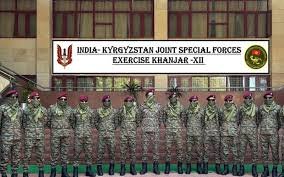A tragic incident unfolded at the Dubai Air Show 2025 when an Indian-built TEJAS fighter jet crashed during an aerial display, resulting in the death of its pilot, Wing Commander Namansh Syal.
The accident occurred shortly after 2 PM local time at Al Maktoum International Airport while performing aerobatic manoeuvres before a large audience.
Defence expert Captain Anil Gaur (Retd) speculated that the crash could have been caused either by the pilot losing control of the aircraft or by a blackout induced by excessive gravitational forces (g-forces).
The pilot blackout refers to the loss of consciousness caused by high g-forces driving blood away from the brain towards the lower body. Despite pilots wearing G-suits to prevent blood pooling in the legs, an issue with this protective gear cannot be ruled out.
The Indian Air Force (IAF) confirmed that Wing Commander Syal sustained fatal injuries in the accident and expressed deep condolences to his family.
They also announced the constitution of a court of inquiry to investigate the cause of the crash, stating that the exact reasons could only be determined once data from the aircraft cockpit is retrieved and analysed.
Witnesses at the scene described how the TEJAS fighter jet suddenly nosedived and crashed, engulfed in flames that produced dense black smoke visible across the airfield. Videos circulated widely, showing the dramatic crash but no evidence of the pilot ejecting. Emergency teams responded promptly to extinguish the blaze.
Wing Commander Namansh Syal was a seasoned 37-year-old IAF officer, survived by his wife—who is also an IAF officer—their young daughter, and his parents. The incident has cast a sombre mood over the Indian defence community and highlighted the risks faced by pilots during high-intensity aerobatic displays.
This crash marks the second recorded mishap involving the HAL TEJAS fighter jet, underscoring the ongoing challenges in the developmental and operational phases of India’s indigenously produced light combat aircraft.
The investigation’s findings will be essential in resolving any technical or human-factor problems to improve safety in upcoming flights and demonstrations. The
Expert opinion is that either pilot loss of control or g-force-induced unconsciousness are possible causes, while the exact cause is yet unknown pending investigation findings. In order to piece together the events leading up to the tragic accident, the IAF inquiry will concentrate on cockpit data and flight recorder contents. TheThis story reflects on the sacrifices made by military aviators in service of their country during difficult and dangerous operational demonstrations, pays tribute to Wing Commander Namansh Syal, and offers condolences to his family. The

